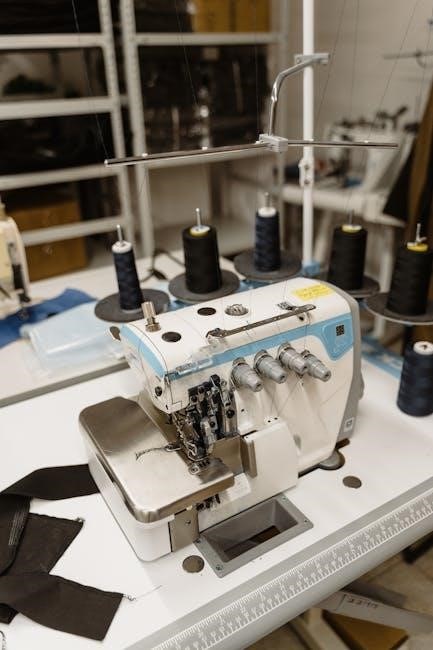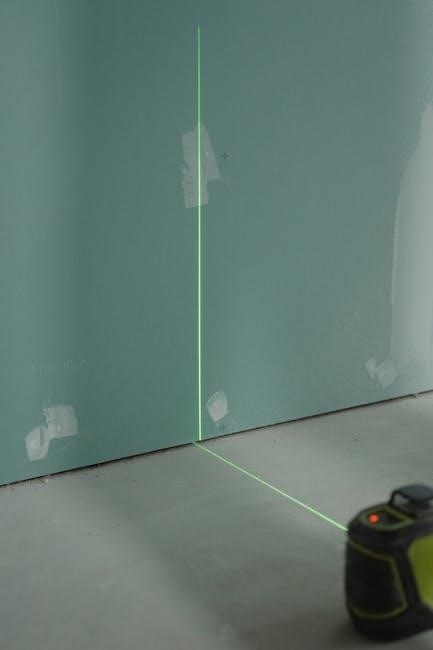shirt measurements guide
Mastering shirt measurements ensures a perfect fit, boosts confidence, and simplifies shopping. This guide provides essential tips and techniques for accurate sizing, helping you find your ideal shirt effortlessly.
1.1 Importance of Accurate Shirt Measurements
Accurate shirt measurements are crucial for ensuring a perfect fit, enhancing comfort, and boosting confidence. Proper sizing avoids ill-fitting shirts that may look unflattering or feel restrictive. By taking precise measurements, you can identify the ideal shirt size, reducing the need for returns or alterations. Whether for casual wear or formal occasions, accurate measurements ensure the shirt drapes well and aligns with your body type. This guide helps you master the process, making your shirt-buying experience seamless and stress-free.
1.2 Purpose of the Guide
This guide serves as a comprehensive resource to help individuals determine their shirt measurements accurately. It aims to simplify the process of finding the perfect fit by providing clear, step-by-step instructions for measuring key areas such as neck, chest, and sleeve length. Additionally, the guide highlights the importance of considering factors like fabric type and body type to ensure a flattering and comfortable fit. By following this guide, readers can confidently select shirts that meet their style and sizing needs, making shopping a more enjoyable and efficient experience for everyone.
Understanding Key Measurements for Shirts
Accurate shirt measurements are crucial for a perfect fit. Key measurements include neck, chest, sleeve length, waist, shoulder width, hip, and shirt length, ensuring comfort and style.
2.1 Neck Measurement
The neck measurement is a critical factor in determining shirt fit, especially for dress shirts. To measure accurately, wrap a flexible tape measure around the base of your neck, keeping it loose enough to fit two fingers comfortably. This ensures the collar will neither be too tight nor too loose. Proper neck measurement is essential for both comfort and style, as it directly affects the shirt’s collar fit. For casual shirts, this measurement may be less critical, but for formal wear, precision is key to achieving the perfect look and feel.
2.2 Chest Measurement
The chest measurement is a fundamental aspect of shirt sizing, ensuring a comfortable and flattering fit. To measure accurately, wrap a flexible tape measure around the widest part of your chest, keeping it level and parallel to the floor. The tape should be snug but not tight, allowing for a full range of motion. This measurement is crucial for determining the shirt’s fit across the torso, particularly for casual and dress shirts. For men, it helps identify the ideal fit, while for women, it ensures the shirt accommodates the bust comfortably. Accurate chest measurement is vital for achieving the perfect balance between comfort and style.
2.3 Sleeve Length Measurement
Sleeve length is measured from the shoulder seam to the cuff, ensuring comfort and style. For casual shirts, measure from the shoulder down to the wrist. For dress shirts, measure from the back of the neck, over the shoulder, to the cuff. Keep the arm relaxed and slightly bent to avoid distortion. This measurement ensures sleeves are neither too short nor too long, providing the perfect fit. Accurate sleeve length is essential for both functionality and aesthetic appeal, making it a critical component of shirt measurements.
2.4 Waist Measurement
The waist measurement is taken at the narrowest point of the torso, typically just above the hipbone. It helps determine how the shirt will fit around your midsection. For a relaxed fit, the tape should be loose enough to slide easily. For a tailored look, keep it slightly snug but still comfortable. This measurement is crucial for shirts that taper at the waist, ensuring a balanced silhouette. Accurate waist measurement prevents the shirt from being too tight or boxy, enhancing both comfort and appearance. It varies by style, so always refer to the specific size chart for guidance.
2.5 Shoulder Width Measurement
Shoulder width is measured across the back, from one shoulder seam to the other, ensuring proper fit and alignment. It helps determine how the shirt sits on the body, avoiding overly tight or loose sleeves. Accurate measurement ensures the garment drapes naturally, enhancing comfort and aesthetics. This measurement is especially important for tailored or fitted shirts, where improper fit can affect the entire silhouette. Always keep the tape level and straight, avoiding any slack or tension for precise results. This ensures the shirt’s shoulders align perfectly with yours, providing a polished and comfortable fit.
2.6 Hip Measurement
Hip measurement is essential for ensuring shirts fit well around the lower torso. It is typically taken at the widest point of the hips, usually 7-9 inches below the waistline. For men, this is often referred to as the “seat” measurement, while for women, it helps determine how the shirt will drape over the curves. Accurate hip measurements ensure the shirt isn’t too tight or boxy, providing a balanced fit. Keep the tape measure level and parallel to the floor for the most precise results. This measurement is particularly important for tailored or fitted shirts to achieve a flattering silhouette.
2.7 Shirt Length Measurement
Shirt length is measured from the base of the collar at the back of the neck to the bottom hem. This ensures the shirt is neither too short nor too long. For most shirts, the ideal length allows the shirt to be tucked in comfortably or worn untucked, depending on the style. Place the measuring tape at the collar’s base, align it straight down the back, and measure to the desired hem length. Accurate shirt length ensures a balanced look, whether for casual or formal wear, and prevents the shirt from appearing ill-fitting or unflattering.

Factors Influencing Shirt Fit
Fabric type, style, and body type significantly impact shirt fit. Understanding these factors helps tailor choices for comfort and aesthetics, ensuring a flattering and functional wardrobe essential.
3.1 Fabric Type and Stretch
Fabric type and stretch significantly influence shirt fit. Stretchy fabrics, like polyester blends, offer flexibility and comfort, while non-stretch fabrics, such as cotton, require precise measurements for a snug fit. Understanding fabric properties helps match your lifestyle and body type, ensuring optimal comfort and style. For instance, slim-fit shirts benefit from stretchy materials, while loose-fit styles may use non-stretch fabrics. Always consider fabric stretch when selecting sizes to achieve the desired silhouette and comfort level. This knowledge enhances your ability to choose shirts that align with your preferences and needs.
3.2 Style and Cut of the Shirt
The style and cut of a shirt play a crucial role in achieving the perfect fit. Slim-fit shirts hug the body closely, requiring precise measurements, while regular or loose-fit styles offer more flexibility. The cut influences how measurements translate to comfort and appearance. For example, tailored shirts may emphasize chest and shoulder measurements, whereas casual styles prioritize ease and movement. Understanding your preferred shirt style helps align measurements with the intended fit, ensuring a balance between comfort and aesthetics. Always consider the shirt’s design when interpreting size charts for optimal results.
3.3 Body Type Considerations
Your body type significantly impacts how a shirt fits. For rectangular body types, balanced measurements ensure a comfortable fit, while triangular shapes benefit from tailored styles that emphasize the chest. Oval body types can opt for slim or regular fits, depending on preference. Inverted triangle body types may prefer shirts with broader shoulders for proportion. Understanding your body type helps align measurements with the shirt’s design, ensuring a flattering and comfortable fit. Always consider how your body type interacts with the shirt’s style to make informed sizing decisions.

Step-by-Step Guide to Measuring Yourself
Learn to measure yourself accurately with a flexible tape measure. Start with neck size, then chest, sleeve length, waist, and hip measurements for a perfect fit.
4.1 Tools Needed for Measurement
To accurately measure yourself, you’ll need a flexible measuring tape, preferably made of soft material. Ensure it’s not too tight or rigid, as this can distort measurements. Stand upright and relaxed, avoiding any tension in your body. For best results, have someone assist you to ensure accuracy, especially for measurements like shoulder width and sleeve length. Keep the tape level and parallel to the floor for consistent results. Proper tools and posture are essential for obtaining precise measurements that match your shirt size perfectly.
4.2 How to Measure Neck Size
To measure your neck size, wrap a flexible measuring tape around the base of your neck, just above your Adam’s apple. Ensure the tape is horizontal and not too tight or loose. The ideal fit allows two fingers to slide comfortably under the tape. Relax your body and avoid puffing out your chest or flexing. Take the measurement in inches or centimeters, rounding to the nearest half-size for accuracy. This measurement is crucial for determining collar size, especially for dress shirts, ensuring comfort and a proper fit.
4.3 How to Measure Chest Size
To measure your chest size, wrap a flexible measuring tape around the widest part of your chest, typically just under your armpits. Ensure the tape is horizontal, not too tight or loose, and your body is relaxed. Avoid puffing out your chest or flexing muscles, as this can lead to inaccurate results. The tape should rest evenly across your chest, providing a comfortable fit. This measurement is essential for determining your shirt size and ensuring a flattering, well-fitted garment. Consistency is key, so always measure in the same way for accurate results.
4.4 How to Measure Sleeve Length
To measure sleeve length, place the measuring tape at the shoulder seam where the sleeve attaches to the shirt. For casual shirts, measure from the shoulder down to your wrist or desired cuff length. For dress shirts, measure from the back-center of your neck, over your shoulder, to your cuff. Keep your arm slightly bent and relaxed for accuracy. Ensure the tape stays straight and parallel to your body. Proper posture and a helper can enhance precision. This measurement ensures sleeves fit comfortably, neither too short nor too long, complementing your overall shirt fit perfectly.
4.5 How to Measure Waist Size
To measure your waist size, wrap the measuring tape around the narrowest part of your torso, typically just above your hips and below your ribcage. Keep the tape level and parallel to the floor, ensuring it’s not too tight or loose. Relax your body and avoid holding your breath or sucking in your stomach, as this can lead to inaccurate results. Proper alignment ensures the shirt fits comfortably around your midsection, complementing your body shape and allowing freedom of movement. This measurement is crucial for achieving a balanced fit in both casual and formal shirts.
4.6 How to Measure Shoulder Width
To measure shoulder width, place the measuring tape across the back of your shoulders, aligning it with the seam where the sleeve meets the shirt. Ensure the tape is parallel to the floor and snug but not tight. This measurement determines how the shirt sits on your shoulders, affecting both comfort and appearance. Stand straight and relax your shoulders to get an accurate reading. For the best fit, use this measurement to align with size charts, ensuring the shirt drapes naturally without restriction or sagging.
4.7 How to Measure Hip Size
Measuring hip size involves wrapping the tape around the widest part of your hips, typically 7-9 inches below your waistline. Stand straight and relax, ensuring the tape is level and not twisted. For men, this helps determine how the shirt will fit around the lower torso, while for women, it ensures the shirt accommodates the hips comfortably. Keep the tape loose enough to slide a finger underneath for an accurate reading. This measurement is crucial for fitted styles and ensures the shirt doesn’t restrict movement or look too tight.
4.8 How to Measure Shirt Length
To measure shirt length, start by placing the measuring tape at the base of the collar, directly below the neckline. Extend the tape straight down to the bottom of the shirt, ensuring it lies flat and smooth. For dress shirts, measure to the hem at the back, while for casual shirts, you can opt to measure to the desired cuff length. This ensures the shirt fits perfectly, whether tucked in or left untucked, providing comfort and style tailored to your preference.

Common Mistakes to Avoid
Avoid using a rigid tape measure, as it can lead to inaccurate results. Ensure your body is relaxed during measurements, and do not ignore fabric type or style differences.
5.1 Incorrect Use of Measuring Tape
Using a rigid or improperly positioned measuring tape is a common error. A flexible tape is essential for accurate results. Avoid pulling the tape too tight or leaving it loose, as this can distort measurements. Ensure the tape is level andparallel to the floor for chest and waist measurements. For neck size, the tape should be snug but not constricting. Using a rigid tape can lead to inaccurate neck and sleeve measurements. Always measure on bare skin for consistency. Double-checking measurements ensures reliability and a better fit. Proper technique guarantees precise results, essential for selecting the right shirt size.
5.2 Not Relaxing the Body During Measurement
Tensing muscles or altering posture can lead to inaccurate measurements. Sucking in your stomach or puffing out your chest skews results, causing poor fit. Keep your body relaxed and natural to ensure measurements reflect your true size. Avoid flexing or holding your breath, as this tightens muscles and tissues. For chest measurements, stand tall but naturally, with arms at your sides. For waist measurements, keep your abdomen relaxed to avoid misrepresentation. Proper posture ensures the tape measure lies flat and evenly, providing accurate data for the best fit. Relaxation is key to achieving precise and reliable measurements.
5.3 Ignoring Fabric and Style Differences
Fabric type and shirt style significantly impact fit. Stretchy fabrics require less ease than non-stretch ones, while slim-fit shirts have tighter measurements than relaxed styles. Ignoring these differences can lead to poor fit. For example, a shirt with stretch fabric may fit comfortably at a smaller size than a non-stretch style. Similarly, slim-fit shirts are designed to hug the body, so using standard measurements may result in discomfort. Always consider fabric stretch and style when choosing sizes, and consult brand-specific size charts for accurate results. This ensures a flattering and comfortable fit tailored to your needs.

Frequently Asked Questions (FAQs)
Discover answers to common questions about shirt sizing, fit, and measurements. From mismatched sizes to style preferences, this section addresses concerns to ensure a perfect fit effortlessly.
6.1 What if My Measurements Don’t Match Any Size?
If your measurements don’t match any standard size, consider using brand-specific size charts for a better fit. Some brands offer custom or tailored options. Double-check your measurements for accuracy, as minor errors can lead to size mismatches. If issues persist, contact the brand’s customer service for guidance. Remember, sizing varies across brands, so your size may differ depending on the brand’s fit style. Exploring tailored options can also provide a precise fit tailored to your unique measurements.
6.2 How Do I Choose the Right Fit for My Body Type?
Choosing the right fit involves understanding your body type and how different styles complement it. Slim-fit shirts are ideal for slimmer builds, while regular or classic fits suit medium frames. For broader or athletic builds, consider relaxed or tailored options. Pay attention to fabric stretch and drape, as these impact comfort and appearance. If you have a longer torso, opt for longer shirts, and if you prefer a fitted waist, look for styles with darts or tapering. Experiment with styles like V-necks or spread collars to balance proportions and enhance your silhouette for a flattering fit.
6.3 Can I Use My Existing Shirt for Measurements?
Yes, using a well-fitting shirt as a reference can simplify the measurement process. Lay the shirt flat, smooth out wrinkles, and measure key areas like chest, waist, and sleeve length. Ensure the shirt is buttoned and relaxed. This method is especially useful for determining fit preferences, such as slim or regular fits; However, always cross-reference with a brand’s size chart, as sizing can vary. This approach saves time and ensures consistency, helping you find a new shirt that matches your existing fit perfectly.

Brand-Specific Size Charts
Each brand tailors its size charts uniquely, making it essential to consult specific guides for accurate fits. Use your measurements to navigate these differences effectively.
7.1 Differences in Sizing Across Brands
Shirt sizing varies significantly between brands due to differences in fit styles, fabrics, and target body types. While one brand may offer a relaxed fit, another may cater to slim or athletic builds. Measurements for chest, waist, and sleeve lengths can differ, making direct comparisons challenging. Some brands provide detailed size charts, while others may not, leading to confusion. It’s crucial to consult each brand’s specific guide to ensure accuracy. Additionally, some brands offer custom or tailored options, which require precise measurements for the best fit. Always verify measurements against the brand’s chart for consistency.
7.2 How to Use Brand-Specific Size Charts
To use brand-specific size charts effectively, start by taking your measurements, including neck, chest, sleeve length, and waist. Locate the brand’s size chart, typically found on their website or product page. Match your measurements to the chart, paying attention to the fit style (e.g., slim, regular, or relaxed). Note that sizes may vary between brands, so your size in one brand may not be the same in another. Double-check your measurements and ensure you’re using the correct chart for the specific shirt style. This ensures the best fit and minimizes sizing errors.
7.3 Custom and Tailored Shirt Options
Custom and tailored shirts offer a personalized fit, crafted to your exact measurements. When opting for custom shirts, provide precise measurements, including neck, chest, sleeve length, and waist. Tailors may also request additional details like shoulder width or bicep size. These shirts are made to flatter your body type, ensuring comfort and style. Unlike off-the-rack options, custom shirts allow you to choose fabrics, collar styles, and other features. This bespoke approach guarantees a flawless fit, making it ideal for special occasions or everyday wear. Investing in a tailored shirt ensures longevity and a polished appearance.












Leave a Comment